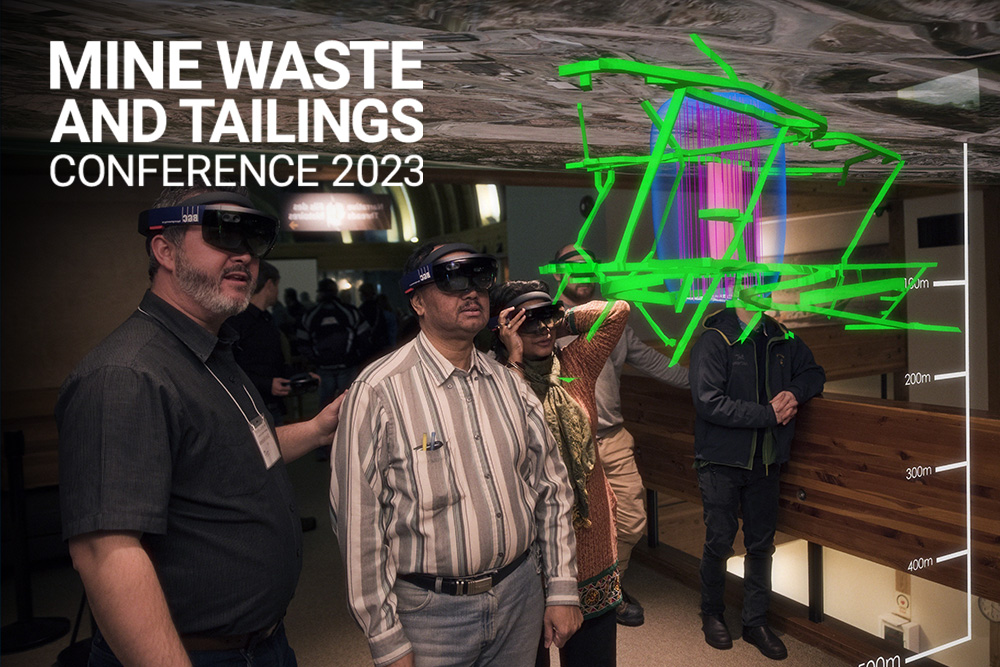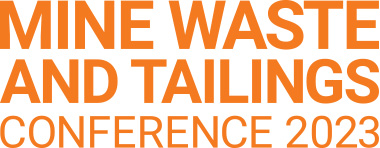3D Holographic Giant Mine Tour
Take the virtual Giant Mine tour at Mine Waste and Tailings 2023! Giant Mine is an abandoned gold mine located in the city of Yellowknife, Northwest Territories (Canada), approximately 5 km from the city center. The mine site is approximately 1,116 hectares in size.

About the mine
The project is on Commissioner’s Lands of the Government of the Northwest Territories. The site is in an area with co-existing rights within the asserted traditional territory of the Akaitcho Territory Dene First Nations and the Mowhi Gogha De Niitaee boundary as defined in the Tłıc̨ hǫ Land Claim and Self Government Agreement; and is adjacent to, or on the boundary of, the Interim Measures Agreement Area of the Northwest Territories Metis Nation.
Gold was discovered on the property and mineral claims staked in 1935. Giant Mine entered production in 1948 and ceased operations in 2004. There were several owners of the mine during its operation. Royal Oak Mines Inc. operated the Giant Mine from 1990 to 1999 and then entered receivership in April 1999. In December 1999, the Ontario Superior Court of Justice ordered the transfer of the Giant Mine property from the interim receiver to Crown-Indigenous Relations and Northern Affairs (CIRNAC) of the federal Government of Canada. In 1999, Canada sold the mine’s assets to Miramar Giant Mine Ltd., a division of Miramar Mining Corporation. As a condition of the sale, Canada acknowledged Miramar would not be responsible or liable for the existing state of the mine. This meant CIRNAC became a caretaker for the site, including the arsenic trioxide stored underground. Miramar Giant Mine Ltd. ended its obligations under the Reclamation Security Agreement in 2005. At that time, Giant Mine officially became an abandoned mine site.
The Giant Mine produced over 7 million ounces of gold between 1948 and 2004 and contributed significantly to the economic viability of the city of Yellowknife and the Territory. The gold at Giant Mine was extracted from arsenopyrite, an arsenic-rich mineral, using a high temperature roasting process, which created arsenic trioxide as a byproduct. From 1948 to 1999, approximately 237,000 tonnes of this collected dust was stored underground in areas of the mine that had been excavated during mine operations and in purpose-built chambers sealed with cement bulkheads. As such, the biggest concern at the site currently is the arsenic trioxide dust stored underground. If left unmanaged, the greatest potential risk is the possibility of uncontrolled flooding of the mine that could result in a release of arsenic into the groundwater, and eventually to local bodies of water, such as Great Slave Lake and Baker Creek. Closure plans to deal with this complex situation have been developed by CIRNAC and its engineering consultants, and in 2023 Giant Mine entered the full-scale remediation phase, for approximately the next 15 years.
About the virtual tour
At Giant, there is a complex underground mining legacy that the community wanted to better understand. Holographic 3D models were created for the Microsoft’s Mixed Reality HoloLens 2 head-mounted displays that allow users to visualize and walk around the surface and underground together, as a community, and ask questions, voice concerns and ideas, and see how groundwater conditions change throughout the seasons and into the future. Additionally, as there are several locations throughout the mine that will be reclaimed based on input from the community, it is important to be able to visualize the design beyond 2D engineering-based drawings. Real-life-scale immersive views were created, providing experiences of how these areas might look once reclamation is finished.
We hope that by sharing the experience of sharing information in this way that the state of practice for creating holistic and sustainable mine closure designs that reflect the input of rights holders and long-term stewards can be advanced.
About the technology: Microsoft HoloLens 2 Mixed Reality (MR)
MR blends both physical and digital worlds together to provide an immersive experience for users. The MR spectrum extends from the physical reality (i.e. real world) to the digital reality and includes augmented reality (AR) and virtual reality (VR). With AR, users use devices to overlay digital images on the physical world, typically using a 2D screen such as phones or tablets. Immersive VR devices typically block out the physical world and replace it with a fully immersive computer-generated 3D environment (i.e. a digital experience).
MR is the next wave in computing. It liberates users from screen-bound experiences by offering natural and intuitive interactions without the need to travel to a project site. We use Microsoft’s holographic technology to anchor virtual objects (3D holographic models) onto the real world. The scale of the digital objects can be from the palm of your hand to so large that the user experiences being inside the object. Using head-mounted displays (HMD) with transparent lenses such as the HoloLens, users can maintain visual connection with their surroundings while they manipulate and interact with the 3D holographic models by leveraging spatial mapping and anchors, hand tracking, eye tracking, voice commands and spatial sound in an immersive setting.
This tour is being provided by BGC Engineering who will be located at Booth 37 in the exhibition hall.
